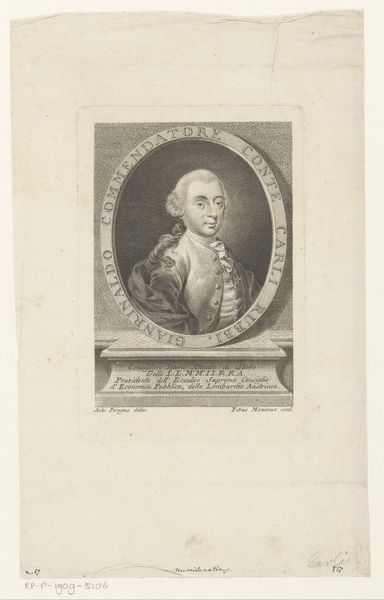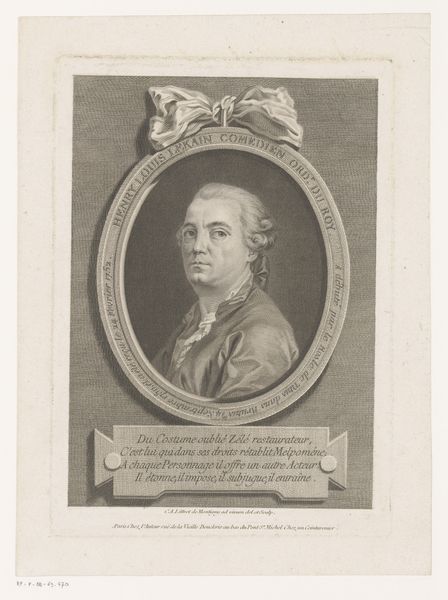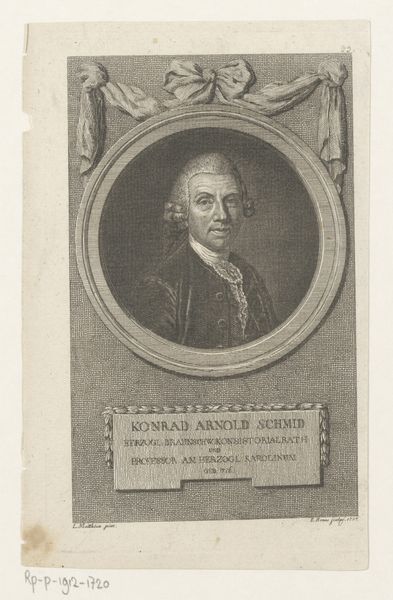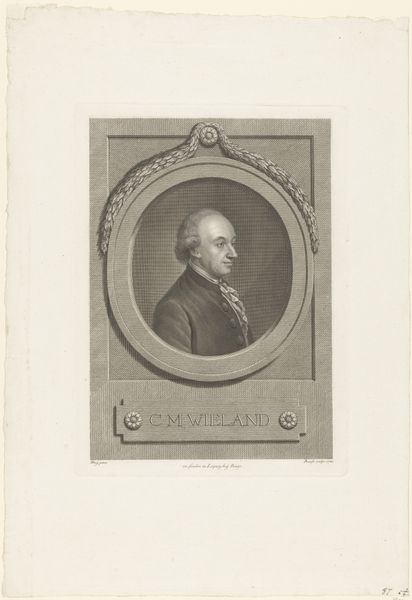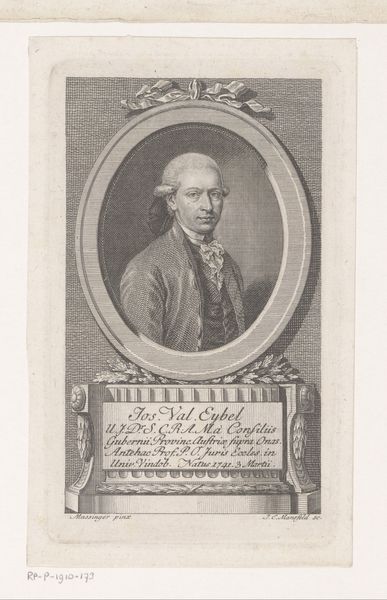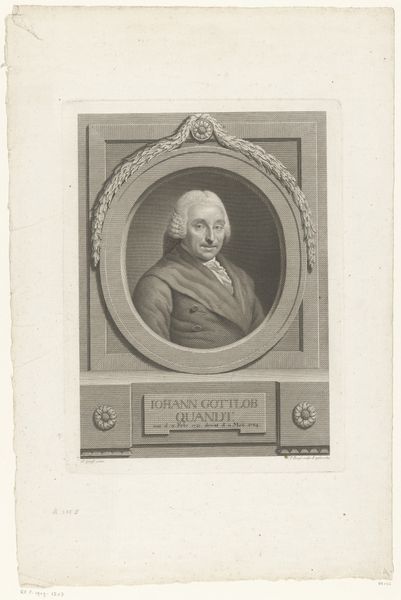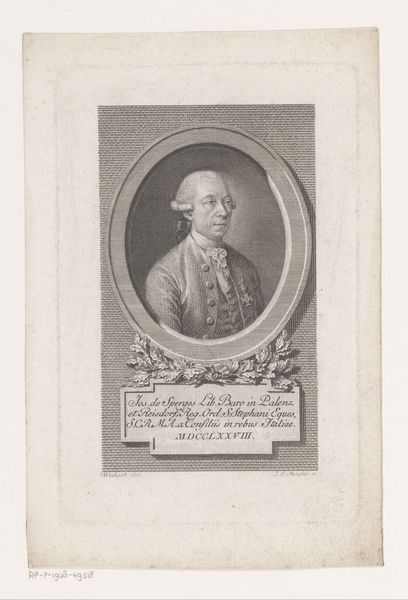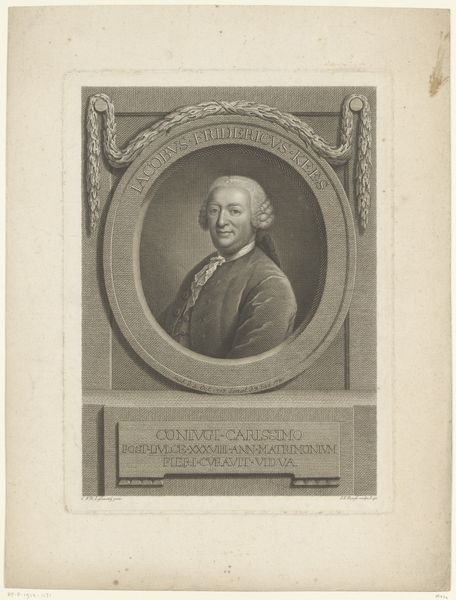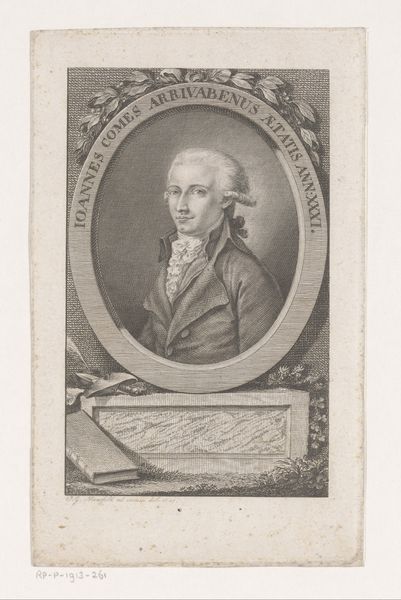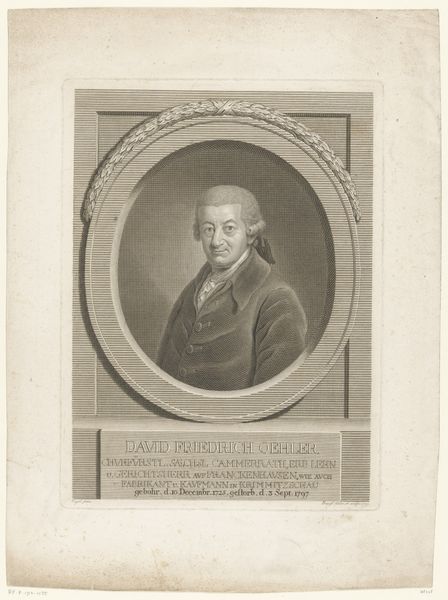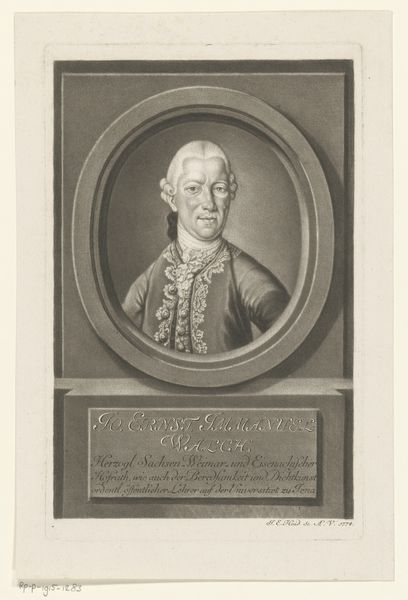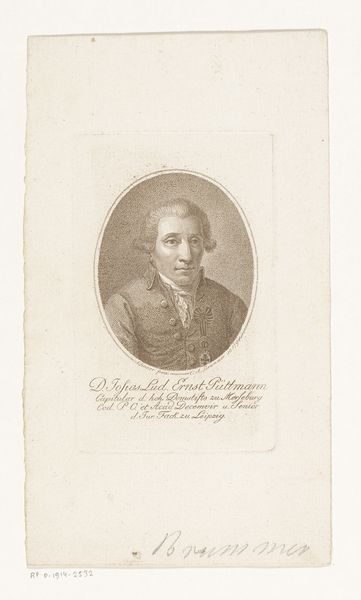
Dimensions: height 250 mm, width 130 mm
Copyright: Rijks Museum: Open Domain
Curator: Ah, here we have a captivating engraving: “Portret van Johann Aloys Schneider.” It was created between 1770 and 1788 by Friedrich Grögory, during a period when portrait engravings gained considerable popularity. Editor: Immediately, there's this stillness. A quiet reserve. The oval frame is almost oppressive, as though this musician has been pinned, like a butterfly. It really conveys someone held in position and purpose. Curator: That formal setting reflects a very deliberate public image. Schneider was clearly a figure of some stature. You can tell this engraving, baroque in its detailing, was probably commissioned to mark an achievement or signal a role in the electorate. He holds the position of Churfürstl. Stift. Capelln, someone connected to the church leadership. Editor: Do you think the artist chose that very tightly cropped composition to symbolize control over self, over the chaotic artistic temperament people might have expected of a musician? Is that severe, plain coat also a kind of calculated…uniform? Curator: Precisely! Look how the portrait, although commemorative, has echoes of state history painting—Grögory uses the standard visual language of power and influence, firmly placing Schneider within a social structure of inherited power and prestige. Editor: Interesting. It's like the musician is deliberately de-emphasizing the romance, drama, or excess people may associate with musicians. Schneider looks solid. Pragmatic, even. His expression offers the audience as much... or as little... as it desires. It's rather ingenious. Curator: Considering that, at the time, baroque sensibilities around representing the powerful were giving way to enlightenment-influenced naturalism, it would have struck contemporary viewers differently from us. To them it could suggest an accessible, modern approachability to the role of state functionary and artist. Editor: What a fascinating tension—between private identity and public presentation! In a simple monochrome print of a bewigged gentleman, we’ve unveiled an intriguing meditation on self-image in 18th-century Leipzig. Curator: Indeed! From art historical object to profound reflection of personhood—this is why art can surprise and challenge us, across the centuries.
Comments
No comments
Be the first to comment and join the conversation on the ultimate creative platform.
